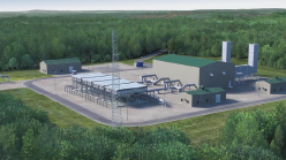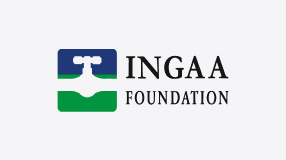Introduction
In September 1999 the Federal Energy Regulatory Commission (FERC) issued Order No. 608 that set out a voluntary program for increasing stakeholder involvement in pre-application activities by allowing applicants, at their election, to participate in a collaborative process that includes environmental analysis and issue resolution. It is designed to bring stakeholders together so that issues, especially potentially contentious issues, can be identified earlier in the process and, if possible, resolved before the applicant submits its certificate application to FERC. While fundamentally sound, Order No. 608 has not been widely utilized by pipeline applicants due to impediments in the process. Nevertheless, project applicants recognize that the challenge of building a pipeline is incrementally greater than in the past and there is unprecedented value in identifying early in the process as many issues as possible so that they may be resolved.
FERC and the pipeline industry concur that stakeholder involvement in the pre-application process may be used to identify and address issues earlier. While there is overall agreement of this goal, understanding the activities that can be used to enhance stakeholder involvement is the intent of this study.
The purpose of this study is to clarify FERC’s objectives and examine industry outreach activities. Also, recognizing that companies currently adopt varied measures to ensure stakeholder involvement, this study offers illustrative examples and some suggestions that would enhance stakeholder involvement practices.
Specifically, this INGAA Foundation study on stakeholder involvement will:
- Examine FERC’s and the natural gas pipeline industry’s current perceptions, attitudes, and beliefs regarding the value, challenges, and current activities taking place during the pre-application process. Additionally, the study examines the unique constraints faced by the gas pipeline industry and explains how FERC has traditionally satisfied stakeholder involvement using the National Environmental Policy Act (NEPA) process.
- Characterize the pre- and post-application procedures that pipeline companies currently use to demonstrate stakeholder participation and collaboration in the process of pipeline routing and construction planning and offer suggested improvements that are options to assist the pipeline project sponsor in meeting the requirements of the FERC Office of Energy Projects (OEP) for stakeholder involvement during the NEPA process.
Methodology
The stakeholder involvement study included three interactions with industry and FERC:
Interviews: Protocols were developed for in-person and telephone interviews with key FERC and industry personnel. The FERC interviews were held first to capture the agency’s perceptions of goals and challenges of stakeholder involvement, current industry practices, and areas of improvement.
Workshop: A broad range of representatives from the natural gas pipeline industry convened in September 2000 for a full-day workshop to discuss stakeholder involvement issues. The goal was to share experiences and attempt to identify typical or common techniques used for stakeholder involvement. Industry was also given a chance to react to information gathered through the initial interview process.
Dialogue: Finally, in November 2000, a facilitated dialogue was conducted in Washington, D.C. between FERC and industry leadership to discuss the ideas generated from the prior two meetings and to consider suggestions for improving stakeholder involvement. A number of suggestions were discussed. These form the basis of the recommended improvements in this study.
It is important to note that the information gathered for this study represents individual experiences and perceptions only. As such, one should not interpret the discussions as representing an official policy or position of either the FERC or the natural gas pipeline industry. Additionally, it is not the intent of this study to either quantify the results or suggest that stakeholder involvement activities be standardized. In fact, while the industry can benefit from the successful experiences of other pipelines, this dialogue underscored that stakeholder involvement activities must be tailored to the specifics of the individual project.
Results
The FERC interviews were designed to gather information about FERC’s perceptions of industry stakeholder involvement activities as well as the methods FERC would view as appropriate in realizing increased stakeholder involvement. The interviews questioned FERC on its opinion of current stakeholder activities, how and when stakeholders should be involved, its experiences and preferences, and finally, its understanding of what barriers there are to involvement.
Many of the outcomes were predictable but some new thoughts emerged as well. FERC believed stakeholders to be more informed, more organized, and more apt to contact the agency if a problem existed. Pipeline company stakeholder involvement practices varied widely but anything less than “progressive” activities were considered unacceptable. FERC believed that applicants were improving their contacts and trying innovative measures but industry still needed to provide better reporting and documentation of these efforts to get recognition. FERC also indicated a willingness to become more involved in pre-application discussions including interagency coordination.
The industry interviews were intended to garner the applicants’ point of view on current activities and experiences. Industry believed FERC favors applications with the least amount of conflict and more upfront work. While companies are willing to work with stakeholders on issues, FERC would have to be willing to play some role in conflict resolution.
Like FERC, industry believed stakeholders to be more coordinated and capable of organizing responses to proposed projects, including negotiating mitigation measures. Industry identified the stakeholder group broadly, including both direct and indirect beneficiaries of the project. Stakeholder involvement and education is critical because whether the stakeholder supports or opposes the project, the stakeholder will raise important issues about the route or project. Industry also expressed frustration over barriers to more extensive stakeholder involvement. Several industry representatives cited the competitive nature of the industry as well as the difficulty in identifying grassroots organizations. Resource limitations also prevent grassroots organizations from more extensive participation. Companies also found some state agencies unwilling to get involved in pre-application discussions or to review competing projects.
During the industry workshop companies shared project specific experiences and ideas. Stakeholder involvement is a multi-step process that requires broad company involvement. In some cases it is better to begin discussions based on a broader geographic area rather than a final pipeline route map. Communications with stakeholders can take many forms and companies have found the media to be most effective when it projects a concise message. Early public meetings and ongoing agency interaction is essential but these could be enhanced if FERC took a more visible role.
In the final dialogue session, FERC and the natural gas pipeline industry discussed the earlier sessions and raised a number of suggestions for enhancing stakeholder involvement. Stakeholder involvement is essential to successfully site a pipeline though a one size fits all approach will not necessarily work. Each project is unique and stakeholder involvement must be tailored to fit the needs and circumstances of the situation. Companies, FERC, and agencies must be committed to maximizing participation so that as many issues as possible are brought to light early in the process.
Recommendations
Based on the interviews, the workshop, and the facilitated dialogue, three suggestions are offered which may facilitate broader, more productive stakeholder involvement. They are options that should be added to the “tool box” of ways to resolve stakeholder concerns. If pursued, these options would need to be customized to fit the needs of the project and the specific stakeholders. The basic goal of each suggestion is to synchronize and streamline the interaction among the different stakeholders for efficient, high quality results. The suggestions are:
1. Optional Forum for Stakeholder Discussion of Project Need
The NEPA process is not intended to be the forum to determine project need. Its purpose is to determine the route with the least adverse environmental impact and adopt the most appropritate mitigation measures for a proposed project for which a federal decision is required. FERC should conduct special public forums for stakeholders on the need for projects. These forums might be on a regional basis and include state agencies. They should address current and projected markets, system alternatives, and other economic and policy considerations.
2. Improved Participation of Agencies During the Development of the Project Filing; Possible Earlier Issuance of NEPA Notice of Intent (NOI) to Prepare Environmental Assessment or Environmental Impact Statement
FERC should work with industry to encourage agencies to coordinate activities and engage in pre-filing discussions and consultations. Workshops and meetings should be designed to coordinate information requests, clarify jurisdictional questions, and raise any issues that would promote information sharing. This suggestion should enhance the environmental review process.
3. Optional Collaborative Selection Process and Rationale for the Proposed Route
Industry should work with FERC to devise a modified collaborative process, which can be used at the applicant’s discretion. The modified process would allow for a progressive, open, and inclusive process where stakeholders are fully engaged in discussions of potential market areas, broad corridors, and feasible routes within those corridors. Such a program should include mechanisms to prevent parties from changing agreements and ensure that efforts are not wasted.





